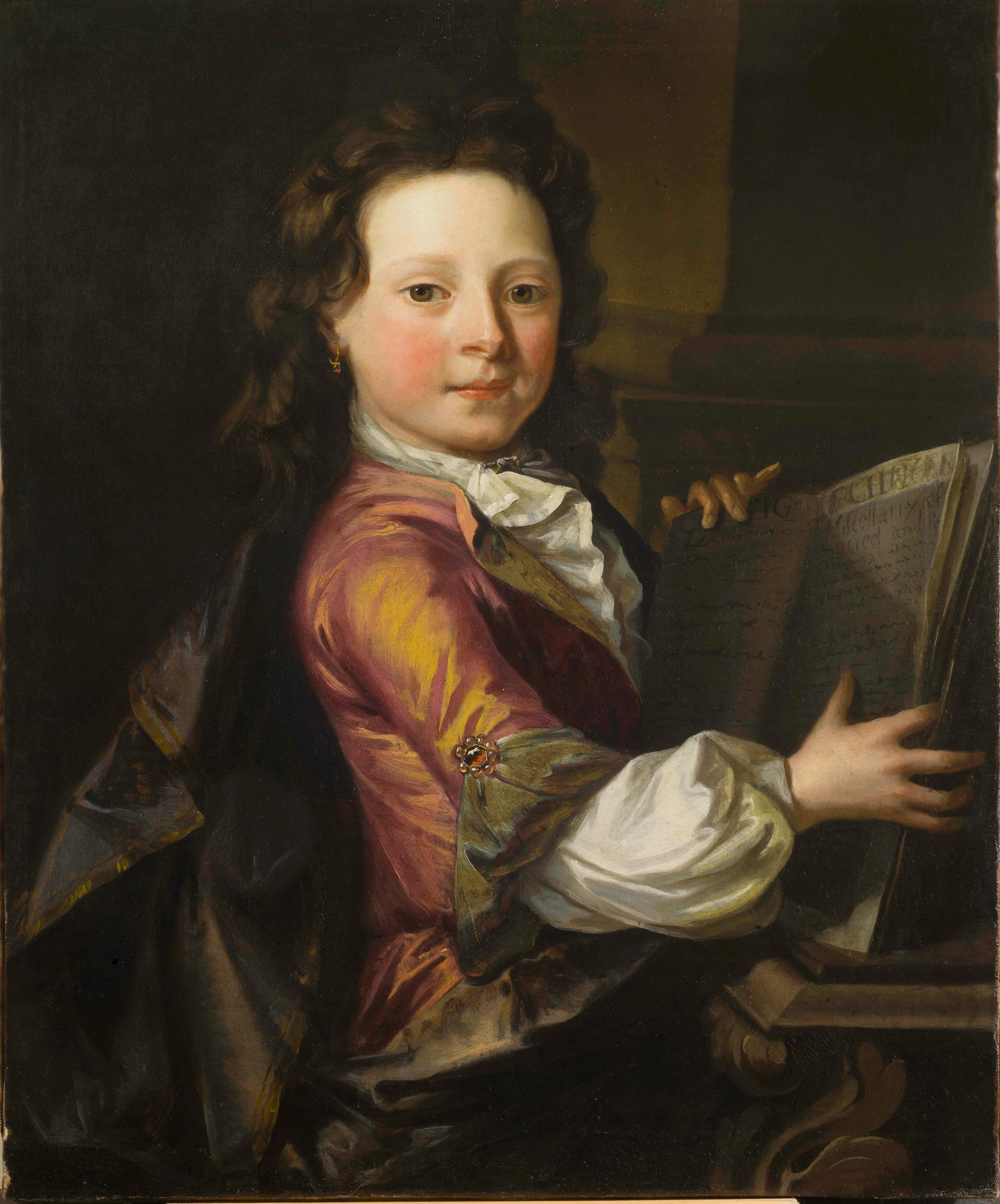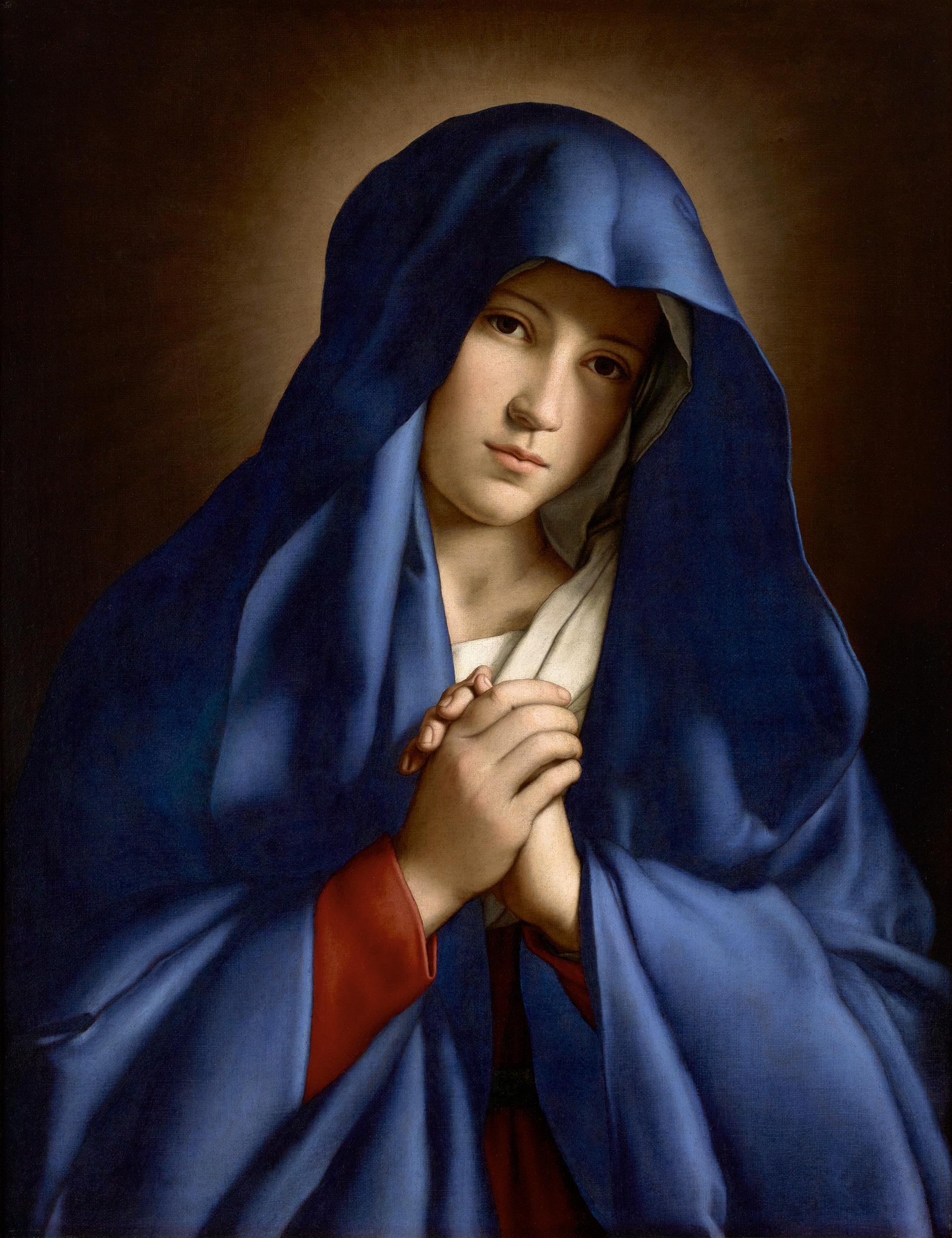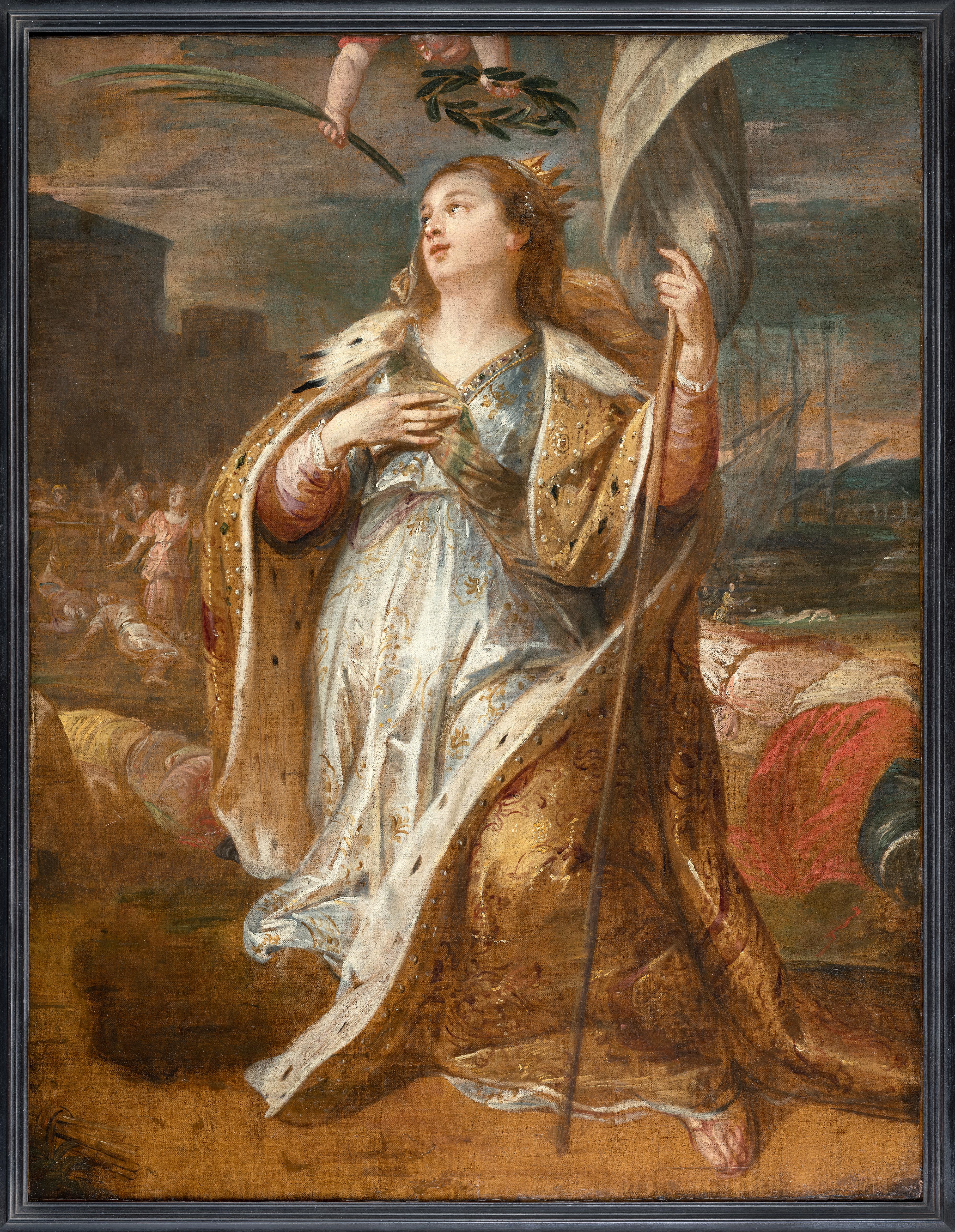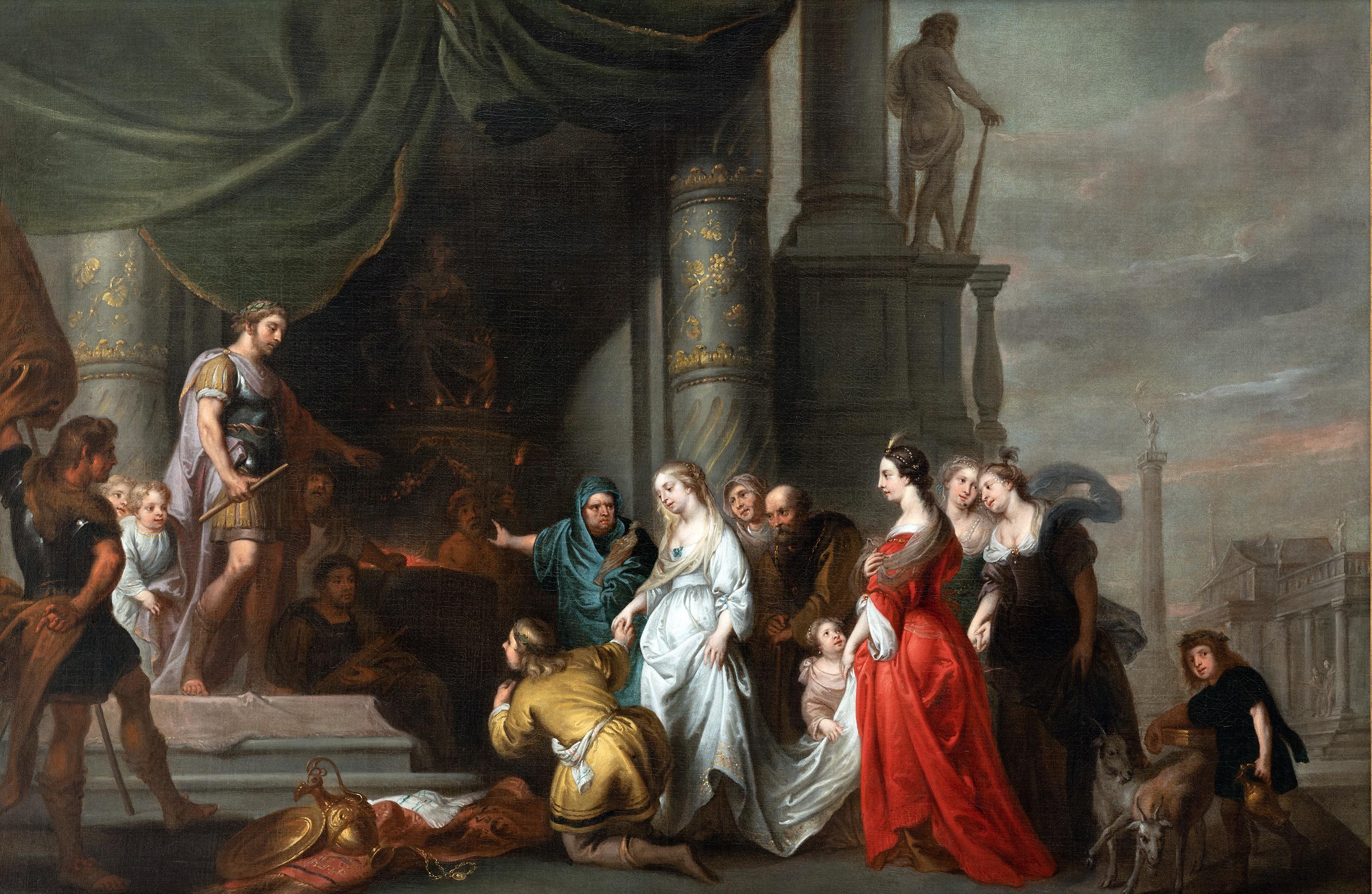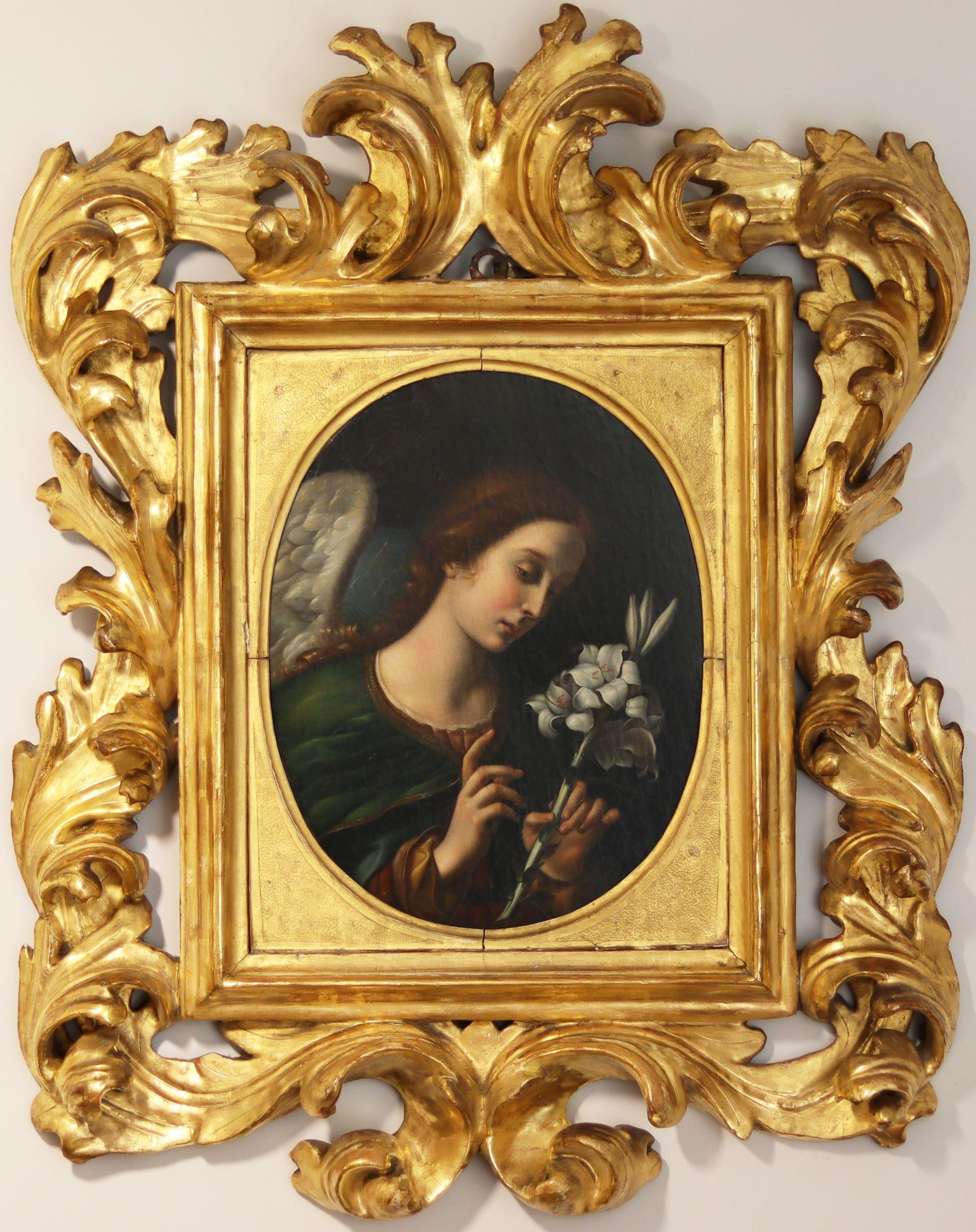Items Similar to 17th Century Italian Oil Painting Portrait of Music Prodigy Girolamo Frescobaldi
Want more images or videos?
Request additional images or videos from the seller
1 of 10
Antiveduta della Grammatica17th Century Italian Oil Painting Portrait of Music Prodigy Girolamo Frescobaldicirca 1605
circa 1605
About the Item
Portrait of Girolamo Frescobaldi (1583-1643)
Attributed to Antiveduto Della Grammatica (1571-1626)
Oil on Canvas
1605-1609
Framed in a Nineteenth Century gild and composite frame
44.5 x 41 inches framed
Provenance:
Baron Kettleby and by descent to
The Reverend W.A. Bedbrough of Tunbridge Wells by 1909
Antiveduto della Grammatica (1571-1626)
Antiveduto Grammatica (1571 – April 1626) was a proto-Baroque Italian painter, active near Rome.
Grammatica was born in either Siena or Rome. According to Giovanni Baglione the artist was given the name Antiveduto ("foreseen") because his father had a premonition that he would soon be born during a journey between his native Siena and Rome. It was in Rome that Antiveduto was baptised, raised and based his career. His apprenticeship with the Perugian artist Giovanni Domenico Angelini (Giandomenico Perugino) introduced him to small-scale work, mostly on copper. He gained the nickname "gran Capocciante" because he specialised in painting heads of famous men. A decade later, in 1591, Antiveduto set up as an independent artist.
Grammatica's earliest surviving public commission, an old-fashioned configuration depicting Christ the Saviour with St. Stanislaus of Krakow, St. Adalbert of Prague and St Hyacinth Odrowaz, was painted for the high altar of San Stanislao dei Polacchi. Characterized by Giulio Mancini as most zealous in his profession, Antiveduto began his association with the Accademia di San Luca in 1593. He gained great familiarity with the two protectors of the Academy, Cardinals Federico Borromeo and Francesco Maria Del Monte, and was closely attached to the latter; so much that he was elected to the highest office of the association as "principe" in 1624. Shortly after this, however, he became embroiled in scandal. The machinations of Grammatica’s enemy Tommaso Salini over the attempt to sell off the Accademia's altarpiece, thought to be by Raphael, brought about a humiliating retreat, when Cardinal Del Monte intervened to re-establish the constitution of the institution. His fortunes were in a way linked with the Cardinal himself, who was much frowned upon by the Barberini, and his death preceded that of Del Monte by four months, in April 1626.
His works are exhibited in numerous public collections, including the State Hermitage Museum - St Petersburg, the Museo Nacional del Prado – Madrid, the Kunsthistorisches Museum, Vienna, the Muzeul Naţional Brukenthal - Sibiu/Hermannstadt, Romania, the Kelvingrove Art Gallery and Museum – Glasgow, and the Maison D’Art Gallery, Monaco.
Sitter
Girolamo Frescobaldi (1583-1643) was one of the most important composers of keyboard music in the late Renaissance and early Baroque periods. A child prodigy, Frescobaldi studied under Luzzasco Luzzaschi in Ferrara, but was influenced by a large number of composers, including Ascanio Mayone, Giovanni Maria Trabaci, and Claudio Merulo. Frescobaldi was appointed organist of St Peter’s Basilica, a focal point of power for the Capella Giulia from 1608-1628 and again from 1634 until his death.
Born in Ferrara, his father Filippo was a man of property, possibly an organist, since both Girolamo and his half-brother Cesare became organists. Contemporary accounts describe Girolamo as a gifted composer and performer child prodigy who was brought through various principle cities of Italy. He quickly gained patronage of important noblemen.
In his early twenties Frescobaldi left his native Ferrara for Rome in 1604-7 to take up a position as the organist at Santa Maria in Trastevere. He was also employed by Guido Bentivoglio, the Archbishop of Rhodes and accompanied him on a trip to Flanders where Bentivoglio had been made nuncio to the court. It was Frescobaldi’s only trip outside Italy but the court at Brussels was musically among the most important in Europe at the time. During this trip, Frescobaldi also visited Antwerp, where local musicians were so impressed with his music, they persuaded him to publish at least some of it.
Whilst abroad, Frescobaldi was elected in 1608 to succeed Ercole Pasquini as organist of St Peter’s Basilica in Rome, though he delayed is return until 29th October in order to publish another collection of music, the keyboard Fantasie. He took up this position of grandeur on 31st October 1608 and held it until death. He remained in Rome but became estranged from his patron Bentivoglio after having an affair with a young woman and a scandal between Bentivoglio and the Medici family.
Frescobaldi also worked for Cardinal Pietro Aldobrandini between 1610-13.
Frescobaldi married Orsola Travaglini in 1613 and had five children. In October 1614 he was approached by an agent of the Duke of Mantua, Ferdinando I Gonzaga. He visited Mantua shortly after but was given such a cold reception, he fled immediately back to Rome where he continued publishing.
In 1628, St Peter’s Basilica granted Frescobaldi permission to move to Florence, under the service of the Grand Duke of Tuscany, a Medici. During his time there, Frescobaldi was the highest paid musician. In 1634 he was summoned to the service of the Barberini family, and to Pope Urban VIII, the highest prize offered to any musician.
Frescobaldi's dress is very similar to that of the Archduke Albert VII's and the Lute Player's in Grammatica's portraits. Frescobaldi was recorded as visiting the Royal Court in Flanders to Archduke Albert VII whilst accompanying his employer Bentivoglio who had been made nuncio to the court.
- Creator:Antiveduta della Grammatica (1571 - 1626)
- Creation Year:circa 1605
- Dimensions:Height: 44.5 in (113.03 cm)Width: 41 in (104.14 cm)
- Medium:
- Movement & Style:
- Period:Early 17th Century
- Condition:
- Gallery Location:London, GB
- Reference Number:1stDibs: LU67335745722
About the Seller
5.0
Vetted Seller
These experienced sellers undergo a comprehensive evaluation by our team of in-house experts.
Established in 1990
1stDibs seller since 2017
40 sales on 1stDibs
Typical response time: 1 to 2 days
- ShippingRetrieving quote...Ships From: London, United Kingdom
- Return PolicyA return for this item may be initiated within 1 day of delivery.
More From This SellerView All
- Stunning 17th Century Oil Painting - Study of a Head of a ManBy Anthony van DyckLocated in London, GBStudio of Sir Anthony Van Dyck (1599-1641, Flemish) Study of a Head of Man Circa 1627-32, Van Dyck’s second Antwerp period Oil on paper, laid down on canvas Dimensions 15 x 14 inches...Category
17th Century Old Masters Portrait Paintings
MaterialsOil
- 18th C. Portrait of the 4th Earl of Sandwich a View of Constantinople BeyondLocated in London, GBJohn Montagu, 4th Earl of Sandwich (13 November 1718 – 30 April 1792) Attributed to George Knapton (1698-1778) Dressed in the Turkish manner, stand...Category
18th Century Old Masters Figurative Paintings
MaterialsOil
- 18th Century Oil Painting Portrait of Provost John Pitcairn of DundeeBy Sir Henry RaeburnLocated in London, GBThe pendant to the present portrait showing John Pitcairn's wife Jean, née Robertson, is in the Huntington Art Gallery, San Marino. Both works are datable to the 1790s. Pitcairn, who served as Provost of Dundee from 1782-84, a position his father-in-law also held from 1731-32, later sat to Raeburn for another portrait, dated to circa 1820, which is now in the Royal Scottish Academy, Edinburgh Sale of Christie's London: Wednesday, July 9, 2014 [Lot 00212] Old Master & British Paintings Day Sale Sold For 22,500 GBP Premium Provenance By descent from the sitter to his great-grandson, Ronald Andrew Pitcairn of Pitcullo; Christie's, London, 25 June 1904, lot 58 (200 gns. to Wallis). Alexander Reid, Glasgow. With Agnew's, London, where acquired by A.R. Wilson Wood, 7 April 1909; Christie's, London, 26 June 1914, lot 78 (850 gns. to Agnew). Anonymous sale; Christie's, London, 24 November 1972, lot 27 (320 gns.) Private collection, Dublin, Ireland Exhibition Edinburgh, Royal Scottish Academy, 1876, no. 256 Literature W. Armstrong, Sir Henry Raeburn, London, 1901, p. 110. J. Greig, Sir Henry Raeburn, R.A., His life and work with a catalogue of his pictures, London, 1911, p. 55. R. Asleson and S.M. Bennett, British Paintings at The Huntington, New Haven and London, 2001, p. 312, fig. 12 Sir Henry Raeburn FRSE RA RSA (4 March 1756 – 8 July 1823) was a Scottish portrait painter and Scotland's first significant portrait painter since the Union to remain based in Scotland. He served as Portrait Painter to King George IV in Scotland. Raeburn was born the son of a manufacturer in Stockbridge, on the Water of Leith: a former village now within the city of Edinburgh. He had an older brother, born in 1744, called William Raeburn. His ancestors were believed to have been soldiers, and may have taken the name "Raeburn" from a hill farm in Annandale, held by Sir Walter Scott's family. Orphaned, he was supported by William and placed in Heriot's Hospital, where he received an education. At the age of fifteen he was apprenticed to the goldsmith James Gilliland of Edinburgh, and various pieces of jewellery, mourning rings and the like, adorned with minute drawings on ivory by his hand, still exist. Soon he took to the production of carefully finished portrait miniatures; meeting with success and patronage, he extended his practice to oil painting, at which he was self-taught. Gilliland watched the progress of his pupil with interest, and introduced him to David Martin, who had been the favourite assistant of Allan Ramsay the Latter, and was now the leading portrait painter in Edinburgh. Raeburn was especially aided by the loan of portraits to copy. Soon he had gained sufficient skill to make him decide to devote himself exclusively to painting. George Chalmers (1776; Dunfermline Town Hall) is his earliest known portrait. In his early twenties, Raeburn was asked to paint the portrait of a young lady he had noticed when he was sketching from nature in the fields. Ann was the daughter of Peter Edgar of Bridgelands, and widow of Count James Leslie of Deanhaugh. Fascinated by the handsome and intellectual young artist, she became his wife within a month, bringing him an ample fortune. The acquisition of wealth did not affect his enthusiasm or his industry, but spurred him on to acquire a thorough knowledge of his craft. It was usual for artists to visit Italy, and Raeburn set off with his wife. In London he was kindly received by Sir Joshua Reynolds, the president of the Royal Academy, who advised him on what to study in Rome, especially recommending the works of Michelangelo, and gave Raeburn letters of introduction for Italy. In Rome he met his fellow Scot Gavin Hamilton, Pompeo Girolamo Batoni and Byers, an antique dealer whose advice proved particularly useful, especially the recommendation that "he should never copy an object from memory, but, from the principal figure to the minutest accessory, have it placed before him." After two years of study in Italy he returned to Edinburgh in 1787, and began a successful career as a portrait painter. In that year he executed a seated portrait of the second Lord President Dundas. Examples of his earlier portraiture include a bust of Mrs Johnstone of Baldovie and a three-quarter-length of Dr James Hutton...Category
18th Century Old Masters Figurative Paintings
MaterialsOil
- Lady Dormore - A 16th Century Portrait of a key member of Shakespeare's EnglandLocated in London, GBLady Dormer, Mary Browne c. 1592 oil on panel 35 x 29 inches, unframed; 41 x 34.75 inches, inc. frame Inscribed 'Lady Dormore' Mary married Henry Wriothesley, 2nd Earl of Southampton who gave birth to Henry Wriothesley, 3rd Earl of Southampton - one of the great figures in Shakespears"s circle and founder of the Virginia company, developers of Virginia USA. Henry Wriothesley, born 6 October 1573 at Cowdray House, Sussex, was the only son of Henry Wriothesley, 2nd Earl of Southampton, by Mary Browne, the only daughter of Anthony Browne, 1st Viscount Montague, and his first wife, Jane Radcliffe.[5] He had two sisters, Jane, who died before 1573, and Mary (c. 1567 – 1607), who in June 1585 married Thomas Arundell, 1st Baron Arundell of Wardour.[6] After his father's death, Southampton's mother married firstly, on 2 May 1595, as his second wife, Sir Thomas Heneage (d. 17 October 1595), Vice-Chamberlain of the Household, and secondly, between 5 November 1598 and 31 January 1599, Sir William Hervey. She died in November 1607.[7] Early life When his father died on 4 October 1581 Southampton inherited the earldom and landed income valued at £1097 6s per annum. His wardship and marriage were sold by the Queen to her kinsman, Charles, Lord Howard of Effingham, for £1000. According to Akrigg, Howard then "entered into some further agreement, of which no documentation can now be found, which transferred to Lord Burghley personally the custody and marriage of the young Earl, but left Howard holding his lands", and late in 1581 or early in 1582 Southampton, then eight years of age, came to live at Cecil House in the Strand.[8] In October 1585, at age twelve, Southampton entered St John's College, Cambridge,[9] graduating M.A. on 6 June 1589.[10] His name was entered at the Gray's Inn legal society before he left the university, and he was admitted on 29 February 1588.[11] On Southampton's 16th birthday, 6 October 1589, Lord Burghley noted Southampton's age in his diary, and by 1590 Burghley was negotiating with Southampton's grandfather, Anthony Browne, 1st Viscount Montague, and Southampton's mother, Mary, for a marriage between Southampton and Lord Burghley's eldest granddaughter, Elizabeth Vere, daughter of Burghley's daughter, Anne Cecil, and Edward de Vere...Category
16th Century Old Masters Figurative Paintings
MaterialsOil
- 17th Century Oil Painting Portrait of a Young English BoyBy Gerard SoestLocated in London, GBGerard SOEST (1600 - 1681) Portrait of a Young Boy oil on canvas 35.5 x 30.5 inches inc. frame Gerard Soest (circa 1600 – 11 February 1681), also known as Gerald Soest, was a portra...Category
17th Century Old Masters Portrait Paintings
MaterialsOil
- Double Portrait Oil Painting Brothers George, 2nd Duke Buckingham & Lord FrancisBy (After) Anthony Van DyckLocated in London, GBAftrer Anthony VAN DYCK - maybe Studio (1599, Antwerp – 1641, London) Flemish Double Portrait of George Villiers, 2nd Duke of Buckingham (1628-1687) & Lord Francis Villiers (1629-1648) Oil on Canvas 170 x 147 cm Anthony Van Dyck (1599-1641) No painter has done more to define an era than Anthony van Dyck. He spent only seven and a half years of his short life (1599- 1641) in England. He grew up in Antwerp, where his precocious talent was recognised by Peter Paul Rubens, the greatest painter of his age. He worked in Rubens’s studio and imitated his style as a religious artist, painting biblical scenes redolent of the lush piety of the counter-reformation. But soon he was on the move. In 1620, he visited London for a few months, long enough to paint a history picture, The Continence of Scipio, for the royal favourite, George Villiers, Marquess of Buckingham, and a portrait of his other English patron, the great art collector, Thomas Howard, 2nd Earl of Arundel. After a stint in Italy, making imposing portraits of the wealthy aristocracy and sketching and copying works by Titian, he returned to the Spanish Netherlands in 1627, becoming court artist to Archduchess Isabella before departing for The Hague in 1631 to paint the Dutch ruler Frederick Henry, Prince of Orange. Charles I’s invitation in 1632 led Van Dyck back to London where he was knighted, paid an annual salary of £200 and installed in a house in Blackfriars with a special jetty at which the royal barge might tie up when the King was visiting his studio. By this time Van Dyck was recognised as the leading court painter in Europe, with Velazquez at the court of Philip IV of Spain his only rival. He also excelled as a superbly observant painter of children and dogs. Van Dyck’s notoriety in depicting children led to the introduction of groups of children without their parents as a new genre into English painting (amongst other new genres). For the next 300 years, Van Dyck was the major influence on English portraiture. Nearly all the great 18th Century portraitists, from Pompeo Batoni and Allan Ramsay to Thomas Gainsborough and Joshua Reynolds, copied Van Dyck’s costumes, poses and compositions. George Duke of Buckingham & his brother Francis Villiers Painted in 1635, this double portrait was originally commissioned by Charles I, who raised the two brothers after their father, George Villiers, was assassinated in 1628. Together with their sister, Lady Mary Villiers, they enjoyed the King’s favour absolutely. Francis whose absolute ‘inimitable handsomeness’ was noted by Marvell (who was killed in a skirmish near Kingston upon Thames). The young duke who commanded a regiment of horse at the Battle of Worcester, remained closely associated with Charles II, held a number of high offices after the Restoration and was one of the most cynical and brilliant members of the King’s entourage, immortalised as ‘Zimri’ in Dryden’s Absalom and Achitopbel. As a young man he had sold his father’s great collection of pictures in the Spanish Netherlands, many of them to the Archduke Leopold Willhelm. Painted for Charles I and placed near the portrait of their sister in the Gallery at St James’ Palace. The handling of both costumes is very rich, and the heads are very carefully and sensitively worked. That of the younger boy in particular is more solidly built up than the lower part of the figure. A preparatory drawing for the younger boy is in the British Museum. There are copies at, e.g., Highclere Castle...Category
17th Century Old Masters Portrait Paintings
MaterialsOil
You May Also Like
- Portrait of a Boy, John Closterman, Large English Portrait Art, Old MasterBy John ClostermanLocated in Greven, DEJohn Clostermann (Osnabrück 1660 - 1711 London) Portrait of a boy, maybe Charles Hinde Oil on canvas, 61 x 74,6 cm John Closterman (also Klosterman) was a portrait painter of the late 17th and early 18th centuries. He primarily portrayed English noblemen and European aristocratic families. His father was already an artist and he trained his son. In 1679 he went to Paris and studied with Francois de Troy. In 1681 he was in London and worked for the artist John Riley, whose studio he took over after his death. In 1696 he was invited to the Spanish court...Category
17th Century Baroque Figurative Paintings
MaterialsCanvas, Oil
- Madonna Addolorata By SassoferratoBy Giovanni Battista Salvi da SassoferratoLocated in New Orleans, LASassoferrato (Giovanni Battista Salvi) 1609-1685 Italian Madonna Addolorata Oil on canvas Celebrated Italian artist Sassoferrato and his moving religious imagery are the epitome ...Category
17th Century Baroque Figurative Paintings
MaterialsCanvas, Oil
- Boeckhorst, Rubens, Saint Ursula, Decorative Old Master, Woman, Baroque, FlemishBy Jan BoeckhorstLocated in Greven, DEJohann Boeckhorst (Münster 1604 - Antwerp 1668) Saint Ursula Oil on canvas, 112 x 86 cm Provenance: New York, Christe's, 20.3.1981, lot 88 (as Van Diepenbeeck's circle) The presen...Category
17th Century Baroque Figurative Paintings
MaterialsCanvas, Oil
- Portrait of a Gentleman, Halung, Court Painter Schildbach, Gotha, Convex CopperLocated in Greven, DEChristian Schildbach was a very talented artist with his own style. Art painter in Plauen, then court painter in Dresden; around 1706 art painter in Vienna, also active in Bamberg (...Category
18th Century Baroque Portrait Paintings
MaterialsCopper
- Continence of Scipio, Erasmus Quellinus, School Rubens, Baroque Art, Old MasterBy Erasmus Quellinus the YoungerLocated in Greven, DEErasmus Quellinus The Continence of Scipio Oil on Canvas The painting is included in the Catalogue Raisonné of the artist. The Roman commande...Category
17th Century Baroque Figurative Paintings
MaterialsOil, Canvas
- The Angel GabrielLocated in West Sussex, GBAfter Carlo Dolci "The Angel Gabriel" Oil on Canvas: Painted oval form :13 x 11 in. Frame: 29 x 23 in. Fine carved giltwood Florentine frame. Late 18t...Category
17th Century Baroque Portrait Paintings
MaterialsOil
Recently Viewed
View AllMore Ways To Browse
Antique Italian Oil Paintings
Antique Italian Oil Painting
Antique Italian Oil Painting Paintings
Music Records
Small Italian Oil Painting
Italian Oil Painting Small
Early Renaissance Painting
Baroque Oil Painting
Childrens Music
Nineteenth Century Paintings
Italian Painting 17th
Set Of Two Framed Oil Paintings
17th Century Italian Painting
Italian Baroque Painting
17th Italian Oil
17th Oil Italy
17th Century Italy Oil
17th Century Italian Oil
